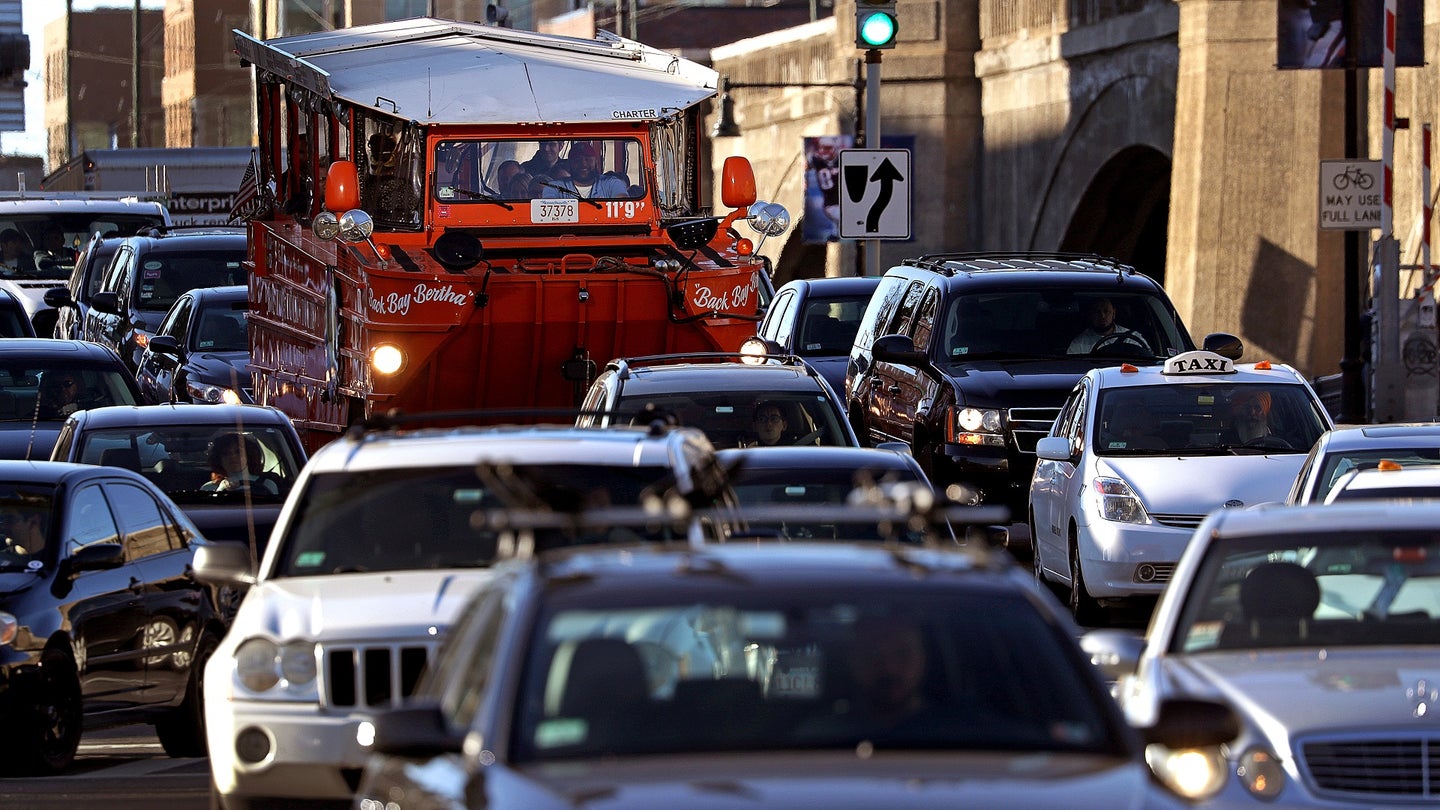Uber and Lyft Are Making Boston Traffic Worse
The popularity of ride-hailing services is actually adding to Boston’s traffic problems, not improving them.

A study by Boston's Metropolitan Area Planning Council has revealed that many people who would be using public transit or their own two feet to get around town during rush hour are now using ride-hailing services such as Uber and Lyft, and that's increasing the amount of traffic on the road at those times.
The Fare Choices report says that "transit substitution," using ride-hailing rather than public transit, is putting more cars on the road at peak times than would otherwise be there. In a survey of nearly 1,000 ride-hailing passengers in late 2017, 40 percent of all those trips occurred during peak commute times.
"Overall, 15 percent of ride-hailing trips are adding cars to the region’s roadways during the morning or afternoon rush hours," the report says.
Ironically, many of the riders doing this also have a weekly or monthly MBTA pass for unlimited subway and bus trips. Instead of using their passes, which many Boston area employers provide free of charge, these riders spend around $10 to $20 for a ride. Perhaps they are looking to avoid the crowds, delays, and other hassles of rush hour on "the T."
It is no surprise that younger passengers, those under age 35, have taken to ride-hailing services in the largest numbers. But it isn't just trust-fund rich kids taking a ride. Many people with incomes under $38,000 a year also prefer ride-hailing.
I could see them willing to pay a premium for the reliability when getting to work on time could make or break their weekly budget. The aging T is prone to frequent delays and breakdowns. When I worked near Boston Common I found it faster, easier, and more reliable to walk to North Station to catch the commuter rail home than to take the Green Line subway from Park Street.
Of course, this is just the beginning. Autonomous taxi and ride-hailing services are seen as the future of motoring in urban areas. Our highways need to handle this traffic or there will be no advantages to these services at all. Similarly, public transit needs to step up its game as well.
"It is essential to ensure that the region has a reliable and effective transit system that—from the rider’s perspective—is competitive with and complementary to on-demand mobility services," the report says. That's a big ask for the MBTA, with aging cars and tracks as well as a massive amount of debt it inherited from the Big Dig that it didn't deserve.
We've asked the Metropolitan Area Planning Council if it has any specific suggestions for how the MBTA can overcome these hurdles and provide more competitive services and will update this story if we receive a response.
